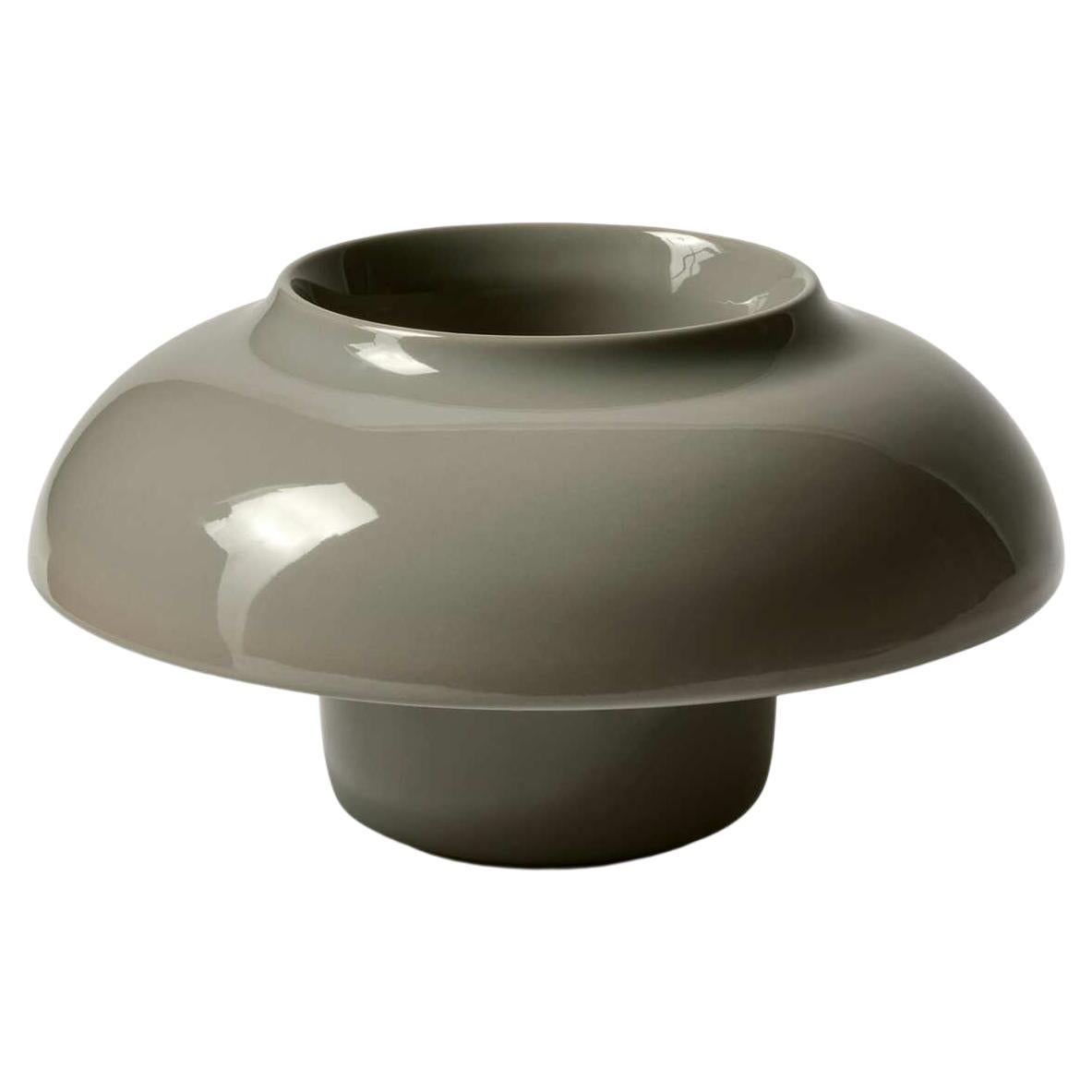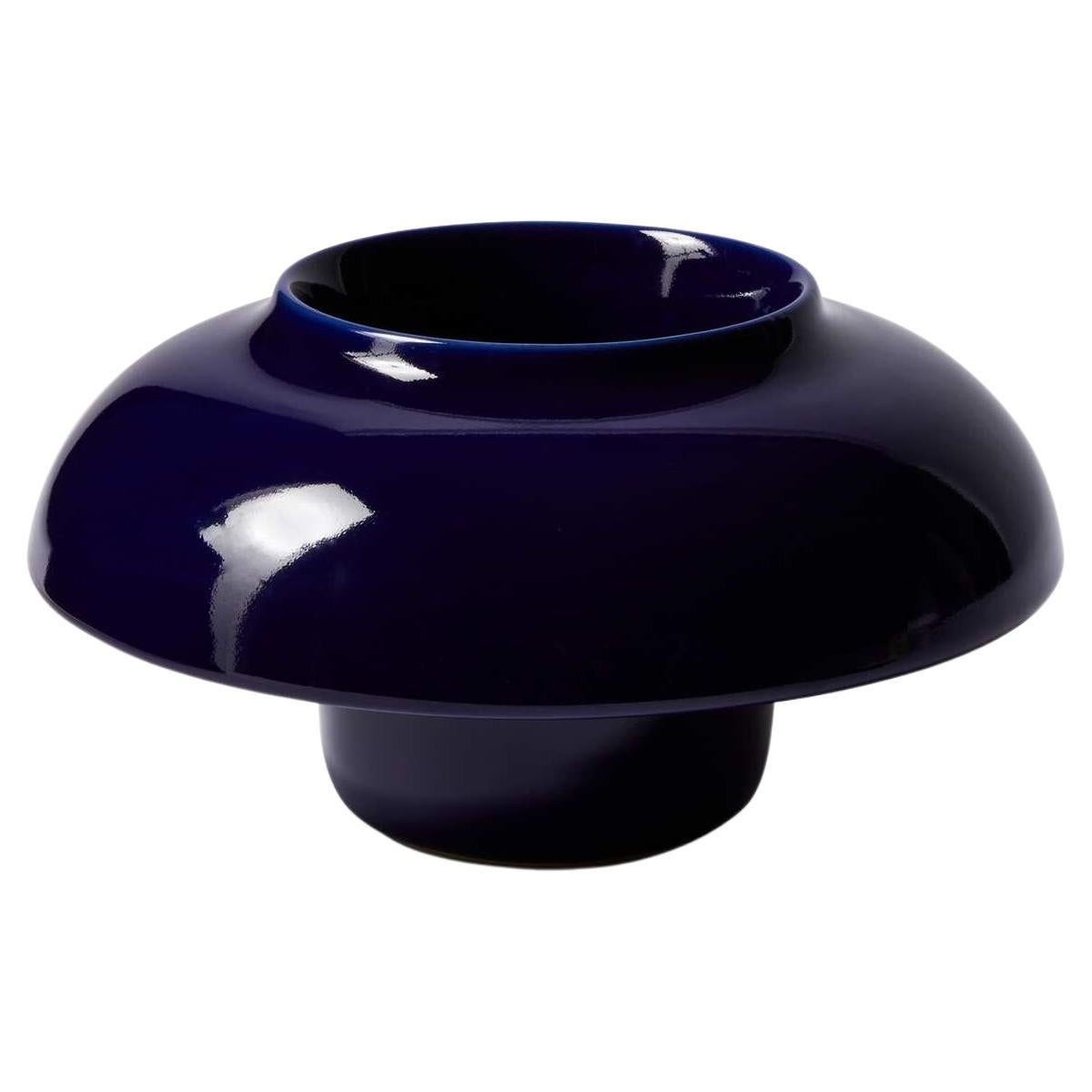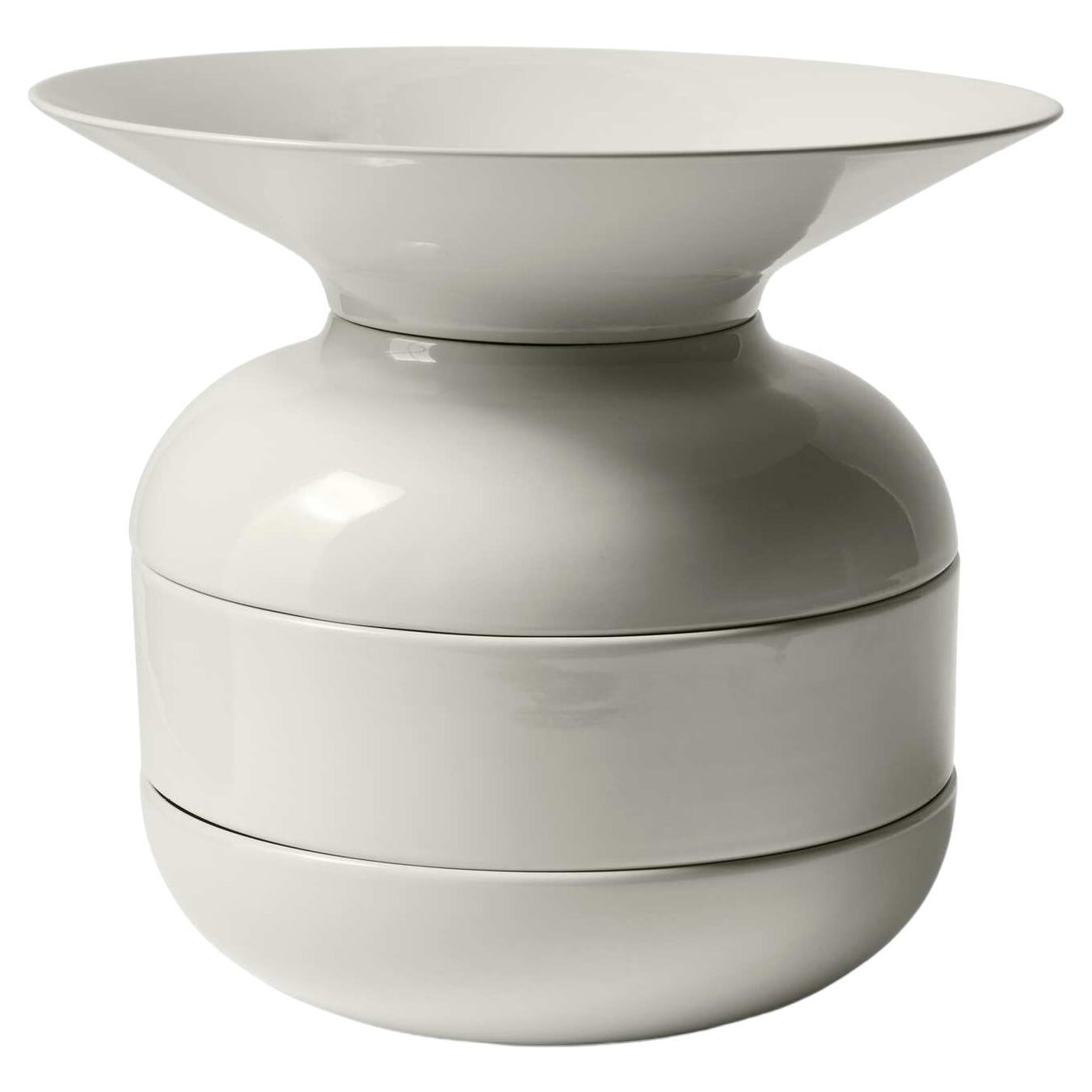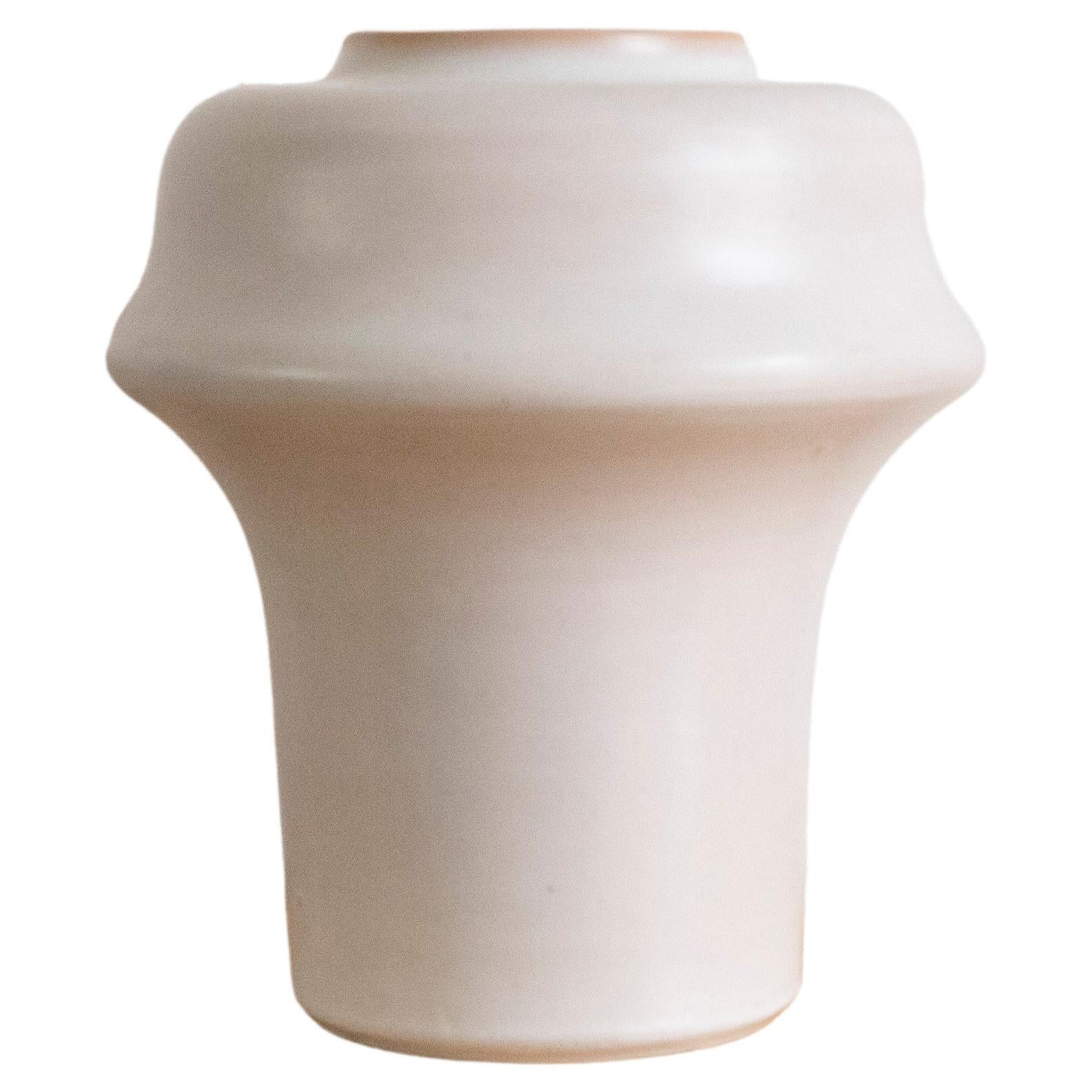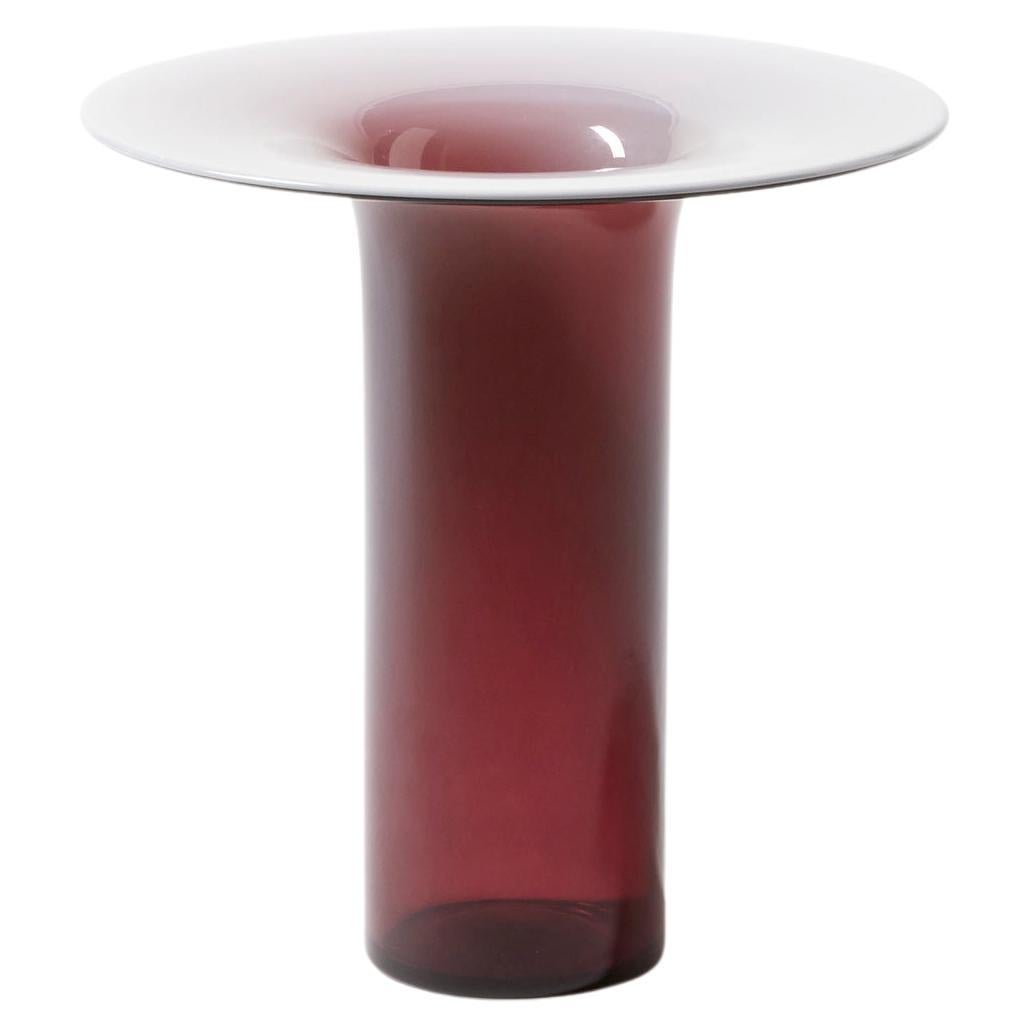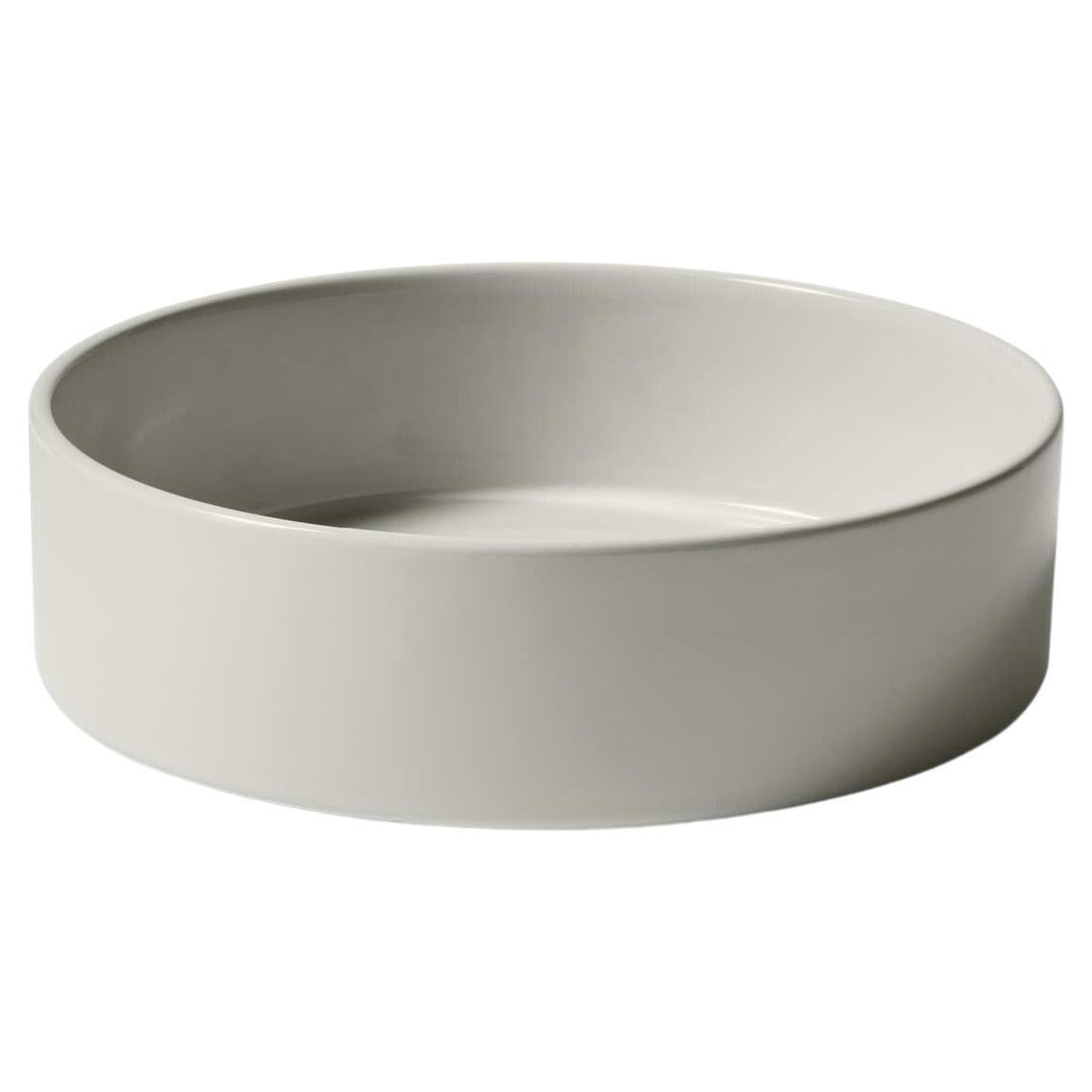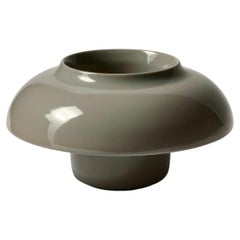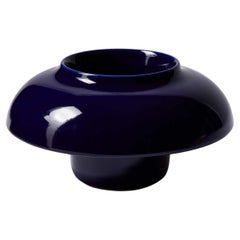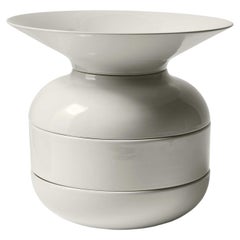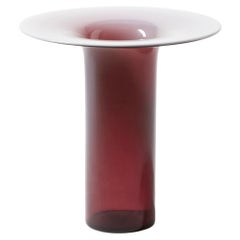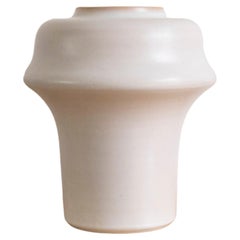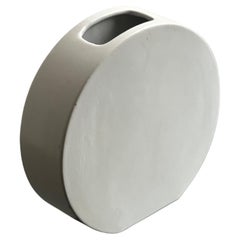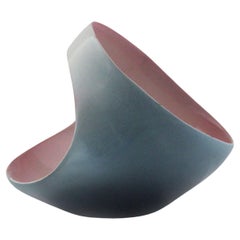Items Similar to Davide Oldani Attila Veres Torrecotta - Vase For Cassina
Want more images or videos?
Request additional images or videos from the seller
1 of 14
Davide Oldani Attila Veres Torrecotta - Vase For Cassina
$275.81per item
£205.18per item
€230per item
CA$377.68per item
A$419.93per item
CHF 219.26per item
MX$5,111.55per item
NOK 2,797.71per item
SEK 2,621.32per item
DKK 1,750.86per item
Quantity
Shipping
Retrieving quote...The 1stDibs Promise:
Authenticity Guarantee,
Money-Back Guarantee,
24-Hour Cancellation
About the Item
Davide Oldani Attila Veres Torrecotta - Vase For Cassina
The result of a collaboration between chef Davide Oldani and designer Attila Veress, Torrecotta Vase, part of the modular system, is a bowl that can be used in different ways, ideal as a storage container.
Each piece of the “tower” serves several functions, including those outside the kitchen: from hors d'oeuvre dish to floral vase to valet tray, as well as serving dish for a light dinner or brunch.
MATERIAL
Glossy enamelled ceramic
COLOURS
Chalk, grey or cobalt blue
STRUCTURE
Four stackable glazed ceramic objects
Torrecotta is a pleasing juxtaposition of functions that can be used individually or in combination, ranging from centrepiece to decor accessory. The collection, developed by Davide Oldani, together with designer Attila Veress, comprises four objects in enamelled ceramic that can be stacked in various ways to create a dramatic scenographic effect. The modular system responds to both practical and decorative needs: each container, available in chalk, grey or cobalt blue colour, can be used for different purposes. As a bowl, it is ideal for serving favourite recipes; as a container, it is a practical tray or vase, while the lid can become a dish for fresh fruit of the season.
Important information regarding images of products:
Please note that some of the images show other colors and variations of the model, these images are only to present interior design proposals. The item that is selling is on the first image.
Important information regarding color(s) of products:
Actual colors may vary. This is due to the fact that every computer monitor, laptop, tablet and phone screen has a different capability to display colors and that everyone sees these colors differently. We try to edit our photos to show all of our products as life-like as possible, but please understand the actual color may vary slightly from your monitor
About the Designer:
Davide Oldani, inventor of POP Cuisine - high quality, priced reasonably - opened his restaurant D’O in 2003 in Cornaredo, outside Milan, his home town. After just a year in business, the most authoritative culinary guides included him among the great chefs of Italian cuisine. He has received many accolades, including a Michelin star in 2004, the City of Milan’s Ambrogino d’oro in 2008 and, in 2013, he was invited to speak at Harvard about his experience as an entrepreneur following publication of a case history about his restaurant in the Harvard Business Review.
About The Manufacturer:
Established in 1927 by Cesare and Umberto Cassina in Meda, Italy, Cassina launched industrial design in Italy in the 1950s, based on a totally innovative approach that marked the transition from artisan production to mass production. With a mindset focused on research and innovation, Cassina combines technology and long-standing artisan craftsmanship.
Memory, research, innovation. Cassina blends traditional skills and superior productivity, meticulous attention to detail and passion, uniqueness and experimentation, wellbeing and sustainability. Today, the company continues to address new lifestyles with the creation of complete, harmonious interior decor solutions that embody the best contemporary design for all areas of the home.
- Dimensions:Height: 7.49 in (19 cm)Diameter: 11.82 in (30 cm)
- Style:Mid-Century Modern (In the Style Of)
- Materials and Techniques:
- Place of Origin:
- Period:
- Date of Manufacture:Contemporary
- Production Type:New & Custom(Current Production)
- Estimated Production Time:9-10 weeks
- Condition:
- Seller Location:Barcelona, ES
- Reference Number:1stDibs: LU1427242943972
About the Seller
4.9
Platinum Seller
Premium sellers with a 4.7+ rating and 24-hour response times
Established in 2015
1stDibs seller since 2015
1,859 sales on 1stDibs
Typical response time: 11 hours
- ShippingRetrieving quote...Shipping from: Barcelona, Spain
- Return Policy
Authenticity Guarantee
In the unlikely event there’s an issue with an item’s authenticity, contact us within 1 year for a full refund. DetailsMoney-Back Guarantee
If your item is not as described, is damaged in transit, or does not arrive, contact us within 7 days for a full refund. Details24-Hour Cancellation
You have a 24-hour grace period in which to reconsider your purchase, with no questions asked.Vetted Professional Sellers
Our world-class sellers must adhere to strict standards for service and quality, maintaining the integrity of our listings.Price-Match Guarantee
If you find that a seller listed the same item for a lower price elsewhere, we’ll match it.Trusted Global Delivery
Our best-in-class carrier network provides specialized shipping options worldwide, including custom delivery.More From This Seller
View AllDavide Oldani Attila Veres Torrecotta - Vase For Cassina
Located in Barcelona, Barcelona
Davide Oldani Attila Veres Torrecotta - Vase For Cassina
The result of a collaboration between chef Davide Oldani and designer Attila Veress, Torrecotta Vase, part of the modular ...
Category
2010s Italian Mid-Century Modern Ceramics
Materials
Ceramic
Davide Oldani Attila Veres Torrecotta - Vase For Cassina
Located in Barcelona, Barcelona
Davide Oldani Attila Veres Torrecotta - Vase For Cassina
The result of a collaboration between chef Davide Oldani and designer Attila Veress, Torrecotta Vase, part of the modular ...
Category
2010s Italian Mid-Century Modern Ceramics
Materials
Ceramic
Davide Oldani Attila Veres Torrecotta For Cassina
Located in Barcelona, Barcelona
Davide Oldani Attila Veres Torrecotta For Cassina
The result of a collaboration between chef Davide Oldani and designer Attila Veress, Torrecotta Vase, part of the modular system,...
Category
2010s Italian Mid-Century Modern Ceramics
Materials
Ceramic
Cassina Silvan Ametista Sfumato Vase
By Cassina
Located in Barcelona, Barcelona
Cassina Silvan Ametista Sfumato Vase
Taking inspiration from the Calla lily and its sinuous, water collecting shape, Silvan is a designer vase in gradient blown glass.
Available i...
Category
2010s Italian Mid-Century Modern Vases
Materials
Glass
$790 Sale Price / item
25% Off
Davide Oldani Attila Veres Torrecotta - Container For Cassina
Located in Barcelona, Barcelona
Davide Oldani Attila Veres Torrecotta - Container For Cassina
The result of a collaboration between chef Davide Oldani and designer Attila Veress, Torrecotta Container, part of the...
Category
2010s Italian Mid-Century Modern Ceramics
Materials
Ceramic
Davide Oldani Attila Veres Torrecotta For Cassina
Located in Barcelona, Barcelona
Davide Oldani Attila Veres Torrecotta For Cassina
The result of a collaboration between chef Davide Oldani and designer Attila Veress, Torrecotta Vase, part of the modular system,...
Category
2010s Italian Mid-Century Modern Ceramics
Materials
Ceramic
You May Also Like
Aldo Londi, vaso serie Etrusco per Bitossi
By Aldo Londi, Bitossi
Located in Firenze, IT
Aldo Londi, vaso serie Etrusco per Bitossi
Vaso creato da Aldo Londi per Bitossi, della serie Etrusco in smalto bianco opaco.
Realizzato negli anni 60.
Category
Vintage 1960s Italian Mid-Century Modern Vases
Materials
Ceramic
Angelo Mangiarotti Danese Philippines Vase, Italy, 1964
By Danese Milano, Angelo Mangiarotti
Located in Roosendaal, Noord Brabant
Decorative and rare ceramic vase model 4028A designed by Angelo Mangiarotti amdn manufactured by Danese, Milano Italy 1964. This rare vase is from the Philippines series designed by ...
Category
Vintage 1960s Italian Mid-Century Modern Vases
Materials
Ceramic
Ceramic vase by Franco Pozzi Ceramiche made in Italy 1960's, artistic accessory
By Franco Pozzi
Located in Milano, IT
Vertical rounded section vase in white ceramic by Franco Pozzi Ceramiche, made in Italy , Gallarate , Milan.
Particular object perfect to style a bookcase, sideboard or table, can be...
Category
Vintage 1960s Italian Organic Modern Jars
Materials
Ceramic
Italian Vase from Ariello, 1950s
Located in Montelabbate, PU
Beautiful Italian vase by Ariello, Turin, 50s. Blue and pink modeled ceramic with handle.
Category
Vintage 1950s Italian Mid-Century Modern Vases
Materials
Ceramic
Ceramic Vase by Paolo Giordano for I+I Collection
By I+I, Paolo Giordano
Located in Milan, Italy
Ceramic vase designed by Paolo Giordano for I+I Collection. With original label.
Biography
The I+I collection is directed by Paolo Giordano, one of the co-founders of I+I in the ear...
Category
2010s Italian Modern Vases
Materials
Ceramic
"Oops" Vase by Ludovica and Roberto Palomba for Bosa Ceramics, Italy, 1980s
By Bosa, Ludovica + Roberto Palomba 1
Located in Bagnolo Mella, Brescia
Presenting the "Oops" Vase by renowned designers Ludovica and Roberto Palomba for Bosa Ceramics, Italy, 1980. This stunning piece, crafted in a semi-gloss white ceramic, features a s...
Category
Vintage 1980s Italian Mid-Century Modern Vases
Materials
Ceramic
More Ways To Browse
Asian Containers
Four Seasons Screen
Asian Display Case
Valet Tray
Stacked Bowl
Enamel Fruit Bowl
Italian Ceramic Fruit Bowl
Enamel Serving Trays
Four Seasons Restaurant
Italian Enamel Dish
Michelin Guide
Ming Box
White Blue Japan Jar
Chinese Canton Rose Porcelain
Famille Rose Porcelain Bowl
Qing Cup
Cargo Porcelain
Japanese Tea Ceremony Ceramics
